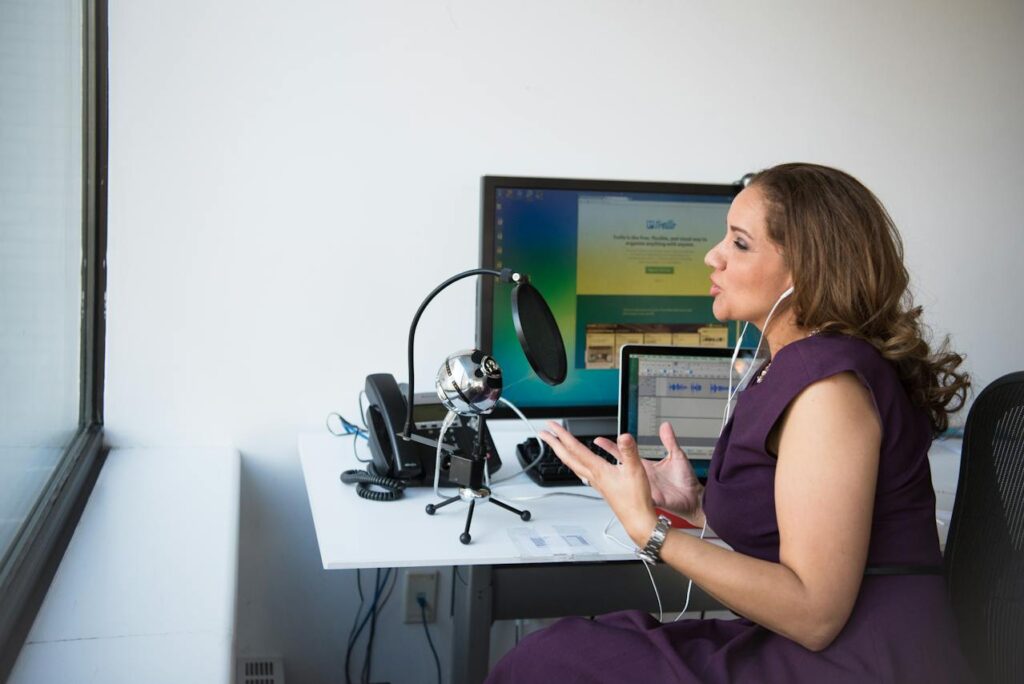The importance of background music for podcasts and videos in the wide world of digital content creation cannot be emphasized. As content creators strive to captivate audiences, the auditory component plays a pivotal role in establishing the mood, enhancing storytelling, and leaving a lasting impression. In this blog post, we delve into the multifaceted role of background music, exploring its psychological impact, strategic implementation, and the tools available to creators. As we navigate through the harmonious tapestry that is audio-visual content, we uncover how background music transforms an ordinary viewing or listening experience into an immersive journey.

The Psychology Behind Sonic Atmospheres
Before delving into the practical aspects, it’s crucial to understand the psychological underpinnings of incorporating background music. Human emotions are intricately tied to auditory stimuli, and music has the power to evoke a wide range of feelings – from joy and excitement to tension and suspense. By strategically choosing the right genre, tempo, and instrumentation, content creators can influence the emotional response of their audience. Studies have shown that well-chosen background music can enhance information retention, making it a valuable tool for educational content as well. It’s not merely an accessory; it’s a psychological trigger that shapes the audience’s perception.
Enhancing the Overall Experience
One of the primary objectives of background music in videos and podcasts is to enhance the overall experience for the audience. Imagine watching a suspenseful scene in a movie without the intense soundtrack building anticipation in the background or listening to a podcast discussing a thrilling mystery without the subtle tones emphasizing key moments. The impact would undoubtedly be diminished. To elevate the overall experience, creators often turn to specialized music libraries or employ composers to craft bespoke soundtracks. However, an excellent alternative is to use a free music generator, for those on a budget or seeking convenience. These tools allow creators to access a vast array of royalty-free music, ensuring a seamless integration of audio elements without compromising quality.
Strategic Implementation: The Art of Timing and Atmosphere
Creating a seamless marriage between visuals or spoken words and background music requires finesse. It’s not just about choosing a catchy tune; it’s about understanding the nuances of timing and atmosphere. In videos, the rhythm and pacing of the music should align with the tempo of the visuals, enhancing the flow rather than disrupting it. Similarly, in podcasts, the music should complement the spoken words, creating a cohesive sonic atmosphere. Consider moments of tension that can be heightened with a subtle crescendo or transitions that can be smoothened with a well-timed musical bridge. Strategic implementation is the art of making the audience forget they are listening to or watching a curated piece and immersing them fully in the narrative.
The Subtle Influence on Branding and Identity
Background music not only elevates individual pieces of content but also plays a crucial role in shaping the overall brand identity. Consistency in the choice of music can establish a recognizable sonic signature for a brand. Whether it’s the whimsical tunes in a tech review series or the ambient sounds in a storytelling podcast, the music becomes a brand ambassador, fostering a sense of familiarity and trust among the audience. This subtle influence extends beyond the individual video or episode, creating a cohesive brand identity that resonates in the minds of viewers and listeners.
Navigating Copyright Challenges: The Importance of Royalty-Free Music

As creators embark on the journey of integrating background music into their content, navigating copyright challenges becomes a paramount concern. The unauthorized use of copyrighted music can lead to legal repercussions and hinder the growth of a channel or podcast. To mitigate this risk, many creators turn to royalty-free music, ensuring they have the right to use the music without infringing on intellectual property rights. This not only safeguards the content but also provides a vast pool of high-quality music for creators to choose from, enabling them to find the perfect sonic accompaniment for their vision.
Adaptability Across Genres and Platforms
The beauty of background music lies in its versatility. Whether you are creating a high-energy vlog, a heartfelt documentary, or an informative podcast, there exists a spectrum of music that can complement the content. Creators can experiment with different genres, from classical and jazz to electronic and hip-hop, to tailor the auditory experience to the specific mood or theme of their content. Moreover, the adaptability of background music extends across various platforms – YouTube, podcasts, social media, and beyond. It’s a universal tool that creators can wield to enhance engagement and connect with diverse audiences.
Whether navigating the psychological nuances of sonic atmospheres, strategically implementing music for maximum impact, or embracing the adaptability of different genres, creators wield background music as a brush to paint vibrant auditory landscapes. As we peer into the future, the harmonious interplay between visuals, spoken words, and music promises to redefine the digital content experience, ensuring that each creation becomes not just a piece of content but a captivating sonic narrative.




